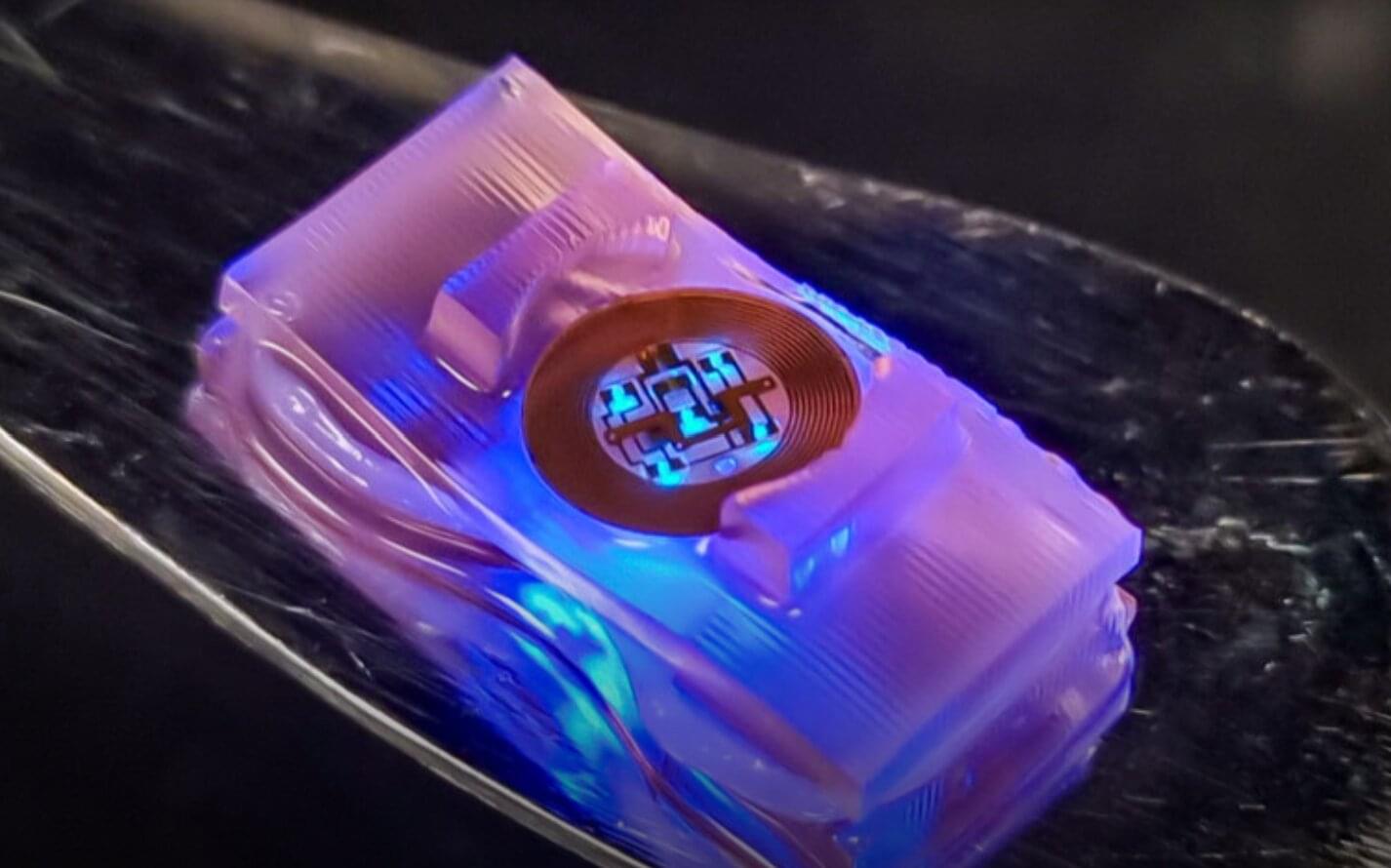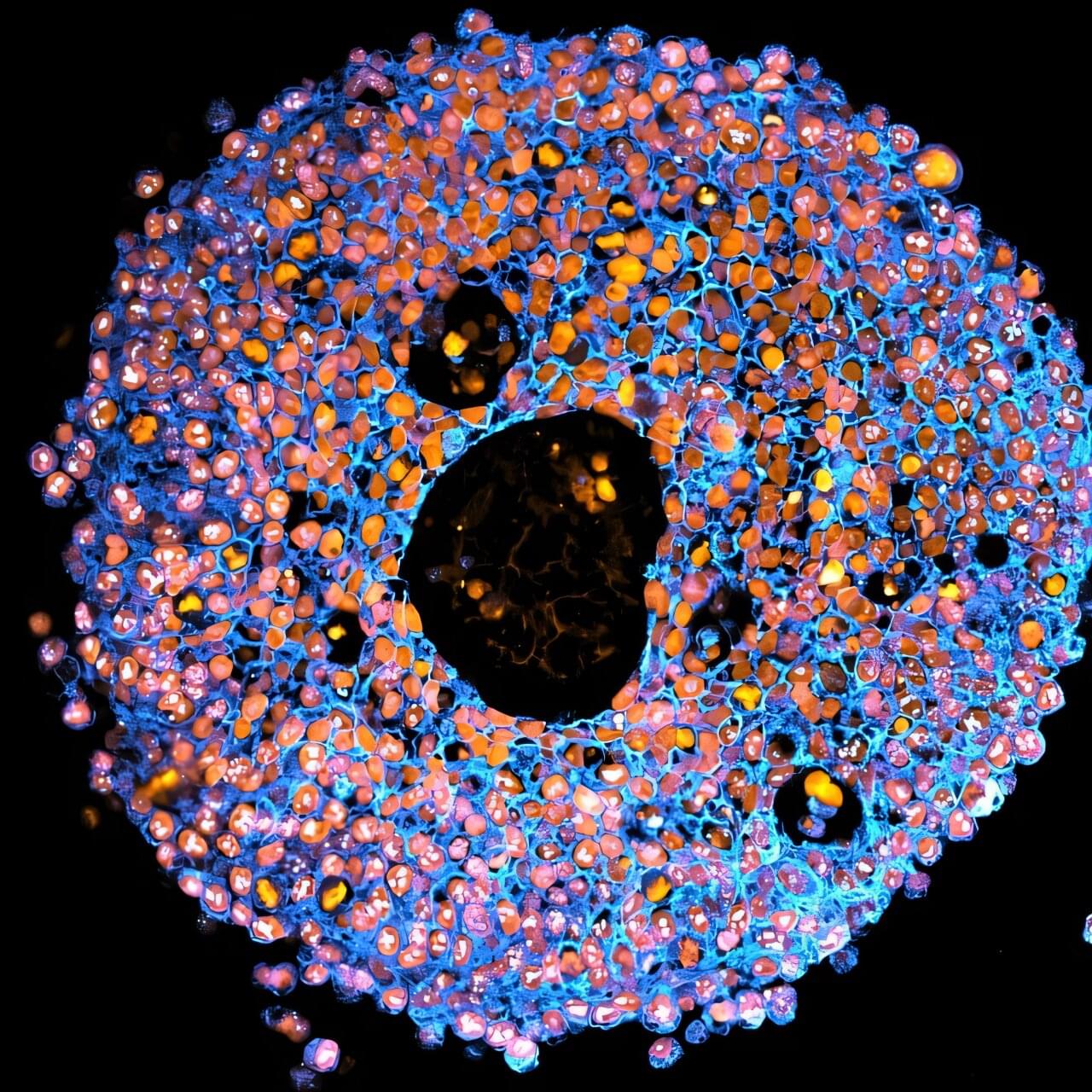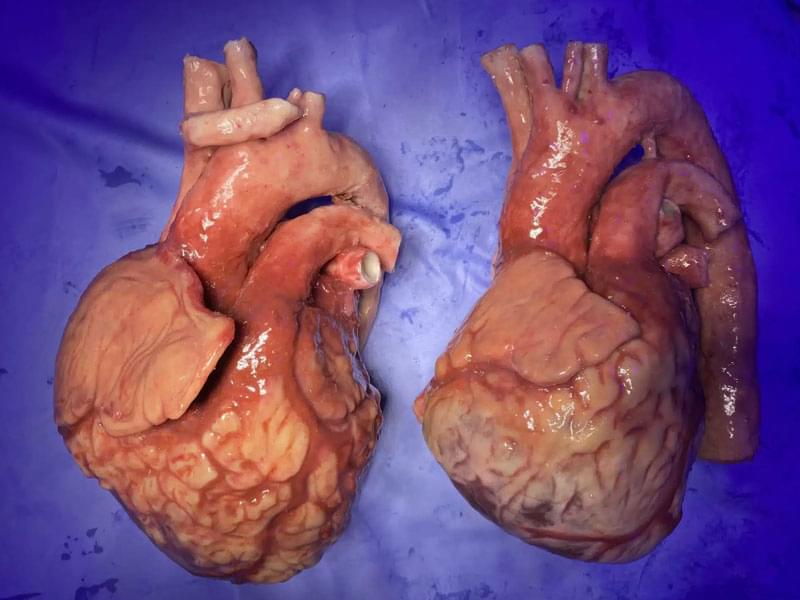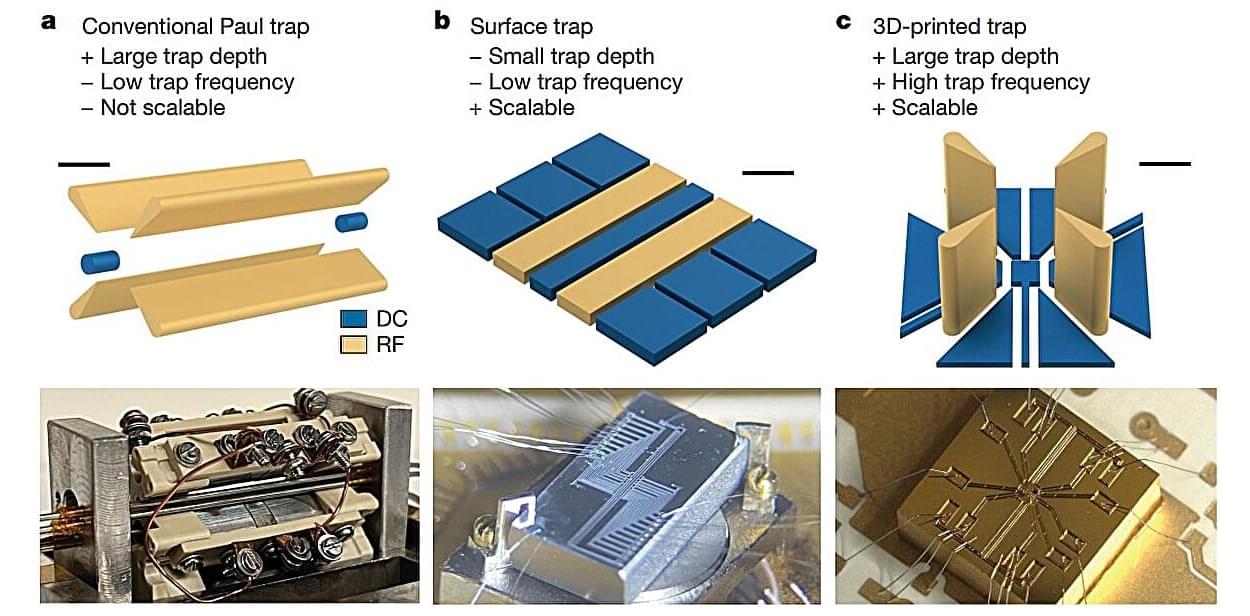The field of tissue engineering aims to replicate the structure and function of real biological tissues. This engineered tissue has potential applications in disease modeling, drug discovery, and implantable grafts.
Category: 3D printing – Page 3

Biohybrid crawlers can be controlled using optogenetic techniques
The body movements performed by humans and other animals are known to be supported by several intricate biological and neural mechanisms. While roboticists have been trying to develop systems that emulate these mechanisms for decades, the processes driving these systems’ motions remain very different.
Researchers at University of Illinois at Urbana-Champaign, Northwestern University and other institutes recently developed new biohybrid robots that combine living cells from mice with 3D printed hydrogel structures with wireless optoelectronics.
These robots, presented in a paper published in Science Robotics, have neuromuscular junctions where the neurons can be controlled using optogenetic techniques, emulating the neural mechanisms that support human movements.

3D bioprinted mini placentas could transform pregnancy research
Pregnancy complications lead to more than 260,000 maternal deaths and millions of infant deaths globally. One serious condition in pregnancy linked to placental dysfunction is preeclampsia, which affects 5%–8% of pregnancies.
The study, led by Associate Professor Lana McClements and first author Dr. Claire Richards, from the UTS School of Life Sciences, has just been published in the journal Nature Communications.


NASA Announces CHAPEA Crew for Year-Long Mars Mission Simulation
Four research volunteers will soon participate in NASA’s year-long simulation of a Mars mission inside a habitat at the agency’s Johnson Space Center in Houston. This mission will provide NASA with foundational data to inform human exploration of the Moon, Mars, and beyond.
Ross Elder, Ellen Ellis, Matthew Montgomery, and James Spicer enter into the 1,700-square-foot Mars Dune Alpha habitat on Sunday, Oct. 19, to begin their mission. The team will live and work like astronauts for 378 days, concluding their mission on Oct. 31, 2026. Emily Phillips and Laura Marie serve as the mission’s alternate crew members.
Through a series of Earth-based missions called CHAPEA (Crew Health and Performance Exploration Analog), carried out in the 3D-printed habitat, NASA aims to evaluate certain human health and performance factors ahead of future Mars missions. The crew will undergo realistic resource limitations, equipment failures, communication delays, isolation and confinement, and other stressors, along with simulated high-tempo extravehicular activities. These scenarios allow NASA to make informed trades between risks and interventions for long-duration exploration missions.
AI turns printer into a partner in tissue engineering
In 3D bioprinting, researchers use living cells to create functional tissues and organs. Instead of printing with plastic, they print with living cells. This comes with great challenges. Cells are fragile and wouldn’t survive a regular 3D printing process. That’s why Levato’s team developed a special bio-ink, a mix of living cells and nourishing gels that protect the cells during the printing process.
With the advancements in bio-inks, layer-by-layer 3D bioprinting became possible. But this method is still time-consuming and puts a lot of stress on the cells. Researchers from Utrecht came up with a solution: volumetric bioprinting.
Volumetric bioprinting is faster and gentler on cells. Using cell-friendly laser light, a 3D structure is created all at once. “To build a structure, we project a series of light patterns into a spinning tube filled with light-sensitive gel and cells,” Levato explains. “Where the light beams converge, the material solidifies. This creates a full 3D object in one go, without having to touch the cells.” To do this, it is crucial to know exactly where the cells are in the gel. GRACE now makes that possible.

3D-printed micro ion traps could solve quantum tech’s miniaturization problem
The existing bottleneck in efficiently miniaturizing components for quantum computers could be eased with the help of 3D printing.
Quantum computers tackle massive computational challenges by harnessing the power of countless tiny parts working seamlessly together. Trapped ion technology, where charged particles like ions are trapped by manipulating the electromagnetic fields, is one such component.
Current microfabrication techniques fall short when it comes to producing the complex electrode structures with optimal ion confinement suitable for quantum operations.
Students develop novel multi-metal 3D printing process
Students at ETH Zurich have developed a laser powder bed fusion machine that follows a circular tool path to print round components, which allows the processing of multiple metals at once. The system significantly reduces manufacturing time and opens up new possibilities for aerospace and industry. ETH has filed a patent application for the machine, and the results are published in the CIRP Annals.
Today, virtually all modern rocket engines rely on 3D printing to maximize their performance with tight coupling between structure and function. Students at ETH Zurich have now built a high-speed multi-material metal printer: a laser powder bed fusion machine that rotates the powder deposition and gas flow nozzles while it prints, which means it can process several metals simultaneously and without process dead time. The machine could fundamentally change the 3D printing of metal parts, resulting in significant reductions in production time and cost.
The team of six Bachelor’s students in their fifth and sixth semesters developed the new machine in the Advanced Manufacturing Lab under the guidance of ETH Professor Markus Bambach and Senior Scientist Michael Tucker as part of the Focus Project RAPTURE. In a mere nine months, the students realized, built and tested their idea. The machine is particularly aimed at applications in aerospace featuring approximately cylindrical geometries, such as rocket nozzles and turbomachinery, but is also of broad interest for mechanical engineering.

Advanced model unlocks granular hydrogel mechanics for biomedical applications
Researchers at the University of Illinois Urbana-Champaign have developed a novel framework for understanding and controlling the flow behavior of granular hydrogels—a class of material made up of densely packed, microscopic gel particles with promising applications in medicine, 3D bioprinting, and tissue repair.
The new study, published in Advanced Materials, was led by chemical and biomolecular engineering professors Brendan A. Harley and Simon A. Rogers, whose research groups specialize in biomaterials engineering and rheology, respectively.
Granular hydrogels have a unique ability to mimic the mechanical properties of living tissue, which makes them ideal candidates for encapsulating and delivering cells directly into the body. By integrating material synthesis and characterization with rheological modeling, the researchers created a predictive model that captures the essential physics of how granular hydrogels deform—reducing a complex problem to a few controllable parameters.
